Running repairs: Ukrainian forces turn to mobile workshops to tackle equipment shortages and a weapons "zoo"
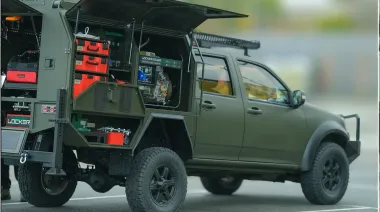
One of the most lucrative businesses in frontline areas is operating car repair workshops, commonly referred to as STOs in Ukraine. Off-road vehicles, pickups and lorries supplied to frontline troops require regular maintenance, so soldiers cover repairs at market rates from their own pockets.
Tyre replacement starts at UAH 800 (around US$19), while welding cracks in wheels begins at UAH 100 per centimetre (about US$2.35/cm). Other services include filter replacement, engine diagnostics, repairing hydraulic system malfunctions and repairing electronics damaged by bombardments. A year of nonstop frontline use leaves the military shelling out big time, costing them an arm and a leg.
Not to mention tanks, infantry fighting vehicles and artillery systems, which constantly wear out and require professional maintenance and repair. Ukraine has a vast arsenal of diverse equipment and repairing it demands a wide range of spare parts and specialised tools.
Equipment is constantly breaking down due to wear and tear as well as Russian strikes. High-quality, rapid repairs are just as crucial as producing new steel beasts.
However, transporting equipment to rear cities is risky, as the areas are riddled with Russian drones and other hazards, and the journey takes a long time. Many breakdowns can be fixed on the spot, saving both fuel and time. Commanders aim to shorten the repair cycle wherever possible to get equipment back into combat quickly.
Quick on-site repairs require special equipment – mobile workshops on wheels. Since the beginning of the war, military units have received plenty of new gear, but buying repair workshops was never a priority.
Ukrainska Pravda has looked into how equipment is repaired near the front line today and which weapons can be fixed without being moved far from the battlefield.
Workshop on wheels
The central concept of a mobile repair workshop is to mount the same equipment found in car repair garages onto a vehicle chassis. The workshop can then be deployed in the field at locations where Ukrainian brigades are operating.
The vehicle must be equipped with tools and capable of producing simple spare parts. It also needs lifting equipment for removing and installing heavy engines. The workshop must be self-sufficient and have its own generator.
Ukraine's Armed Forces inherited a large number of specialised workshops from the Soviet era, but most of the equipment in them is unsuitable for the modern technology provided to the military by Kyiv's partners or volunteers.
"Soviet-era repair workshops are equipped with a welding machine weighing around 300 kg," Colonel Yaroslav Lysenko, Commander of the 43rd Separate Artillery Brigade, told Ukrainska Pravda. "It takes at least three soldiers to unload it from a ZIL vehicle, two more to set it up and maintain it and another two for the welding itself. Today, modern small welding machines can do almost all the work of their predecessor."
The Soviet-era mobile repair workshop PARM-3M consisted of three main units and one auxiliary unit. It was capable of servicing both wheeled and tracked machines. The system also included a large power station on a trailer, which is now replaced by a single standard generator.

Equipment for repairing Soviet-era Ural or KamAZ trucks, once the backbone of the Soviet military, is no longer suitable for modern IVECO and MAN vehicles. It is being repurposed. For example, the 43rd Artillery Brigade uses PARM-3M equipment to produce metal metal fittings for shelters.
Modern repair workshops in today's warfare need equipment compatible with a variety of vehicle models. Advances in technology now allow a single new workshop to replace three of the old ones.
Volunteer containers
Since the start of the full-scale war, Ukraine has deployed dozens of new brigades, with units scattered hundreds of kilometres apart. To carry out repairs or replace spare parts, maintenance teams had to spend hours on the road. What they needed was a fully equipped mobile workshop that could quickly move between positions.
Artillery units experienced the greatest need for such systems, as their constant redeployment along the front line meant logistics simply could not keep pace. They turned to the charity organisation Reactive Post and jointly developed technical documentation for a mobile repair workshop based on a 20-foot container.
Many militaries worldwide began using shipping containers for logistics years ago. They follow a single standard, making them easy to transport by road, sea, or air.
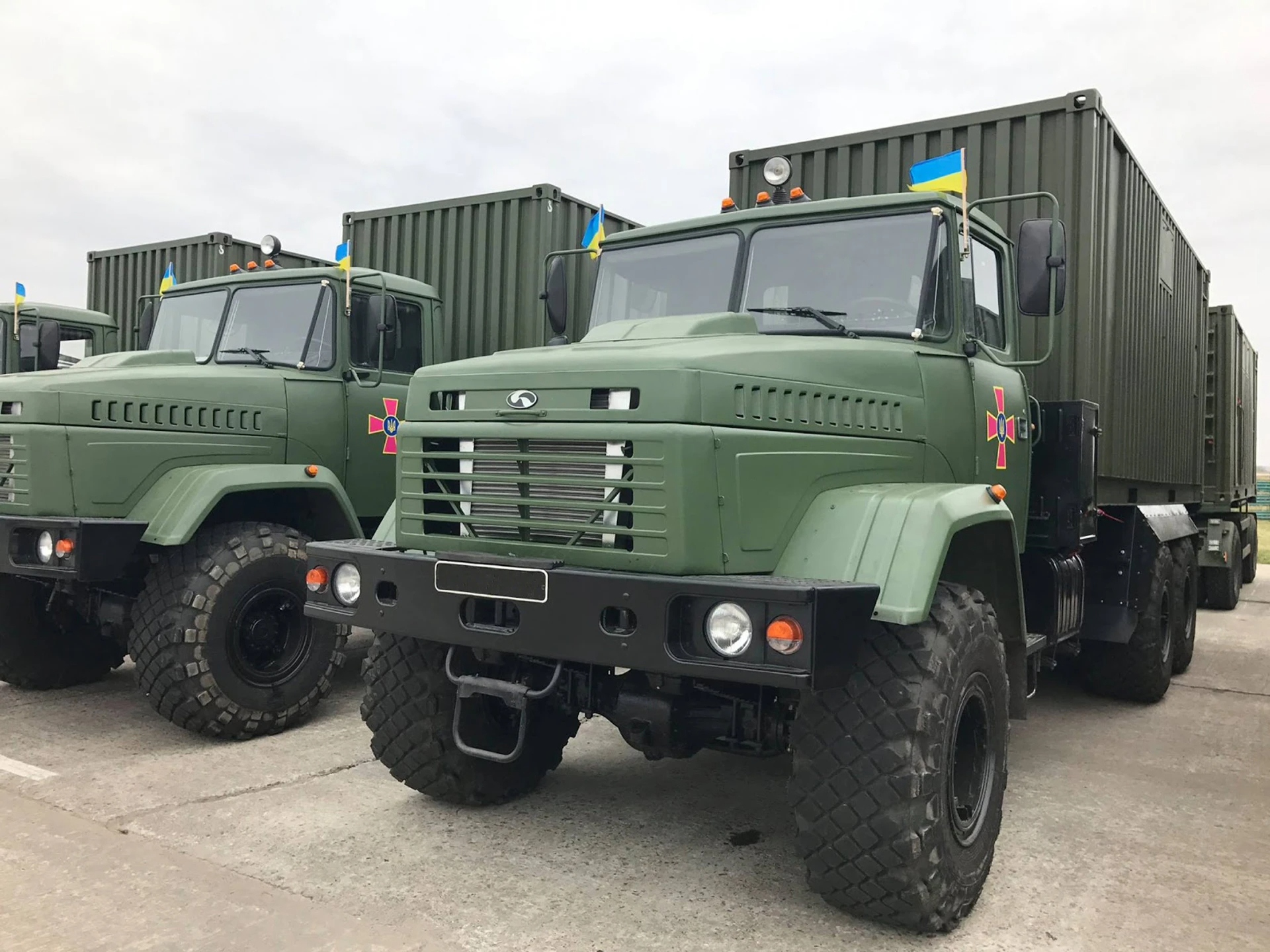
The main advantage of containers is that a military lorry can simply place them at the required site and move on to other tasks. This is a major improvement over Soviet-era logistics, where workshops built into the lorry body remained fixed with the vehicle.
Ultimately, Reactive Post delivered a mobile technical workshop on a MAN chassis, complete with a tyre repair unit on a trailer, to the 43rd Artillery Brigade. The system was manufactured by Grand Instrument.
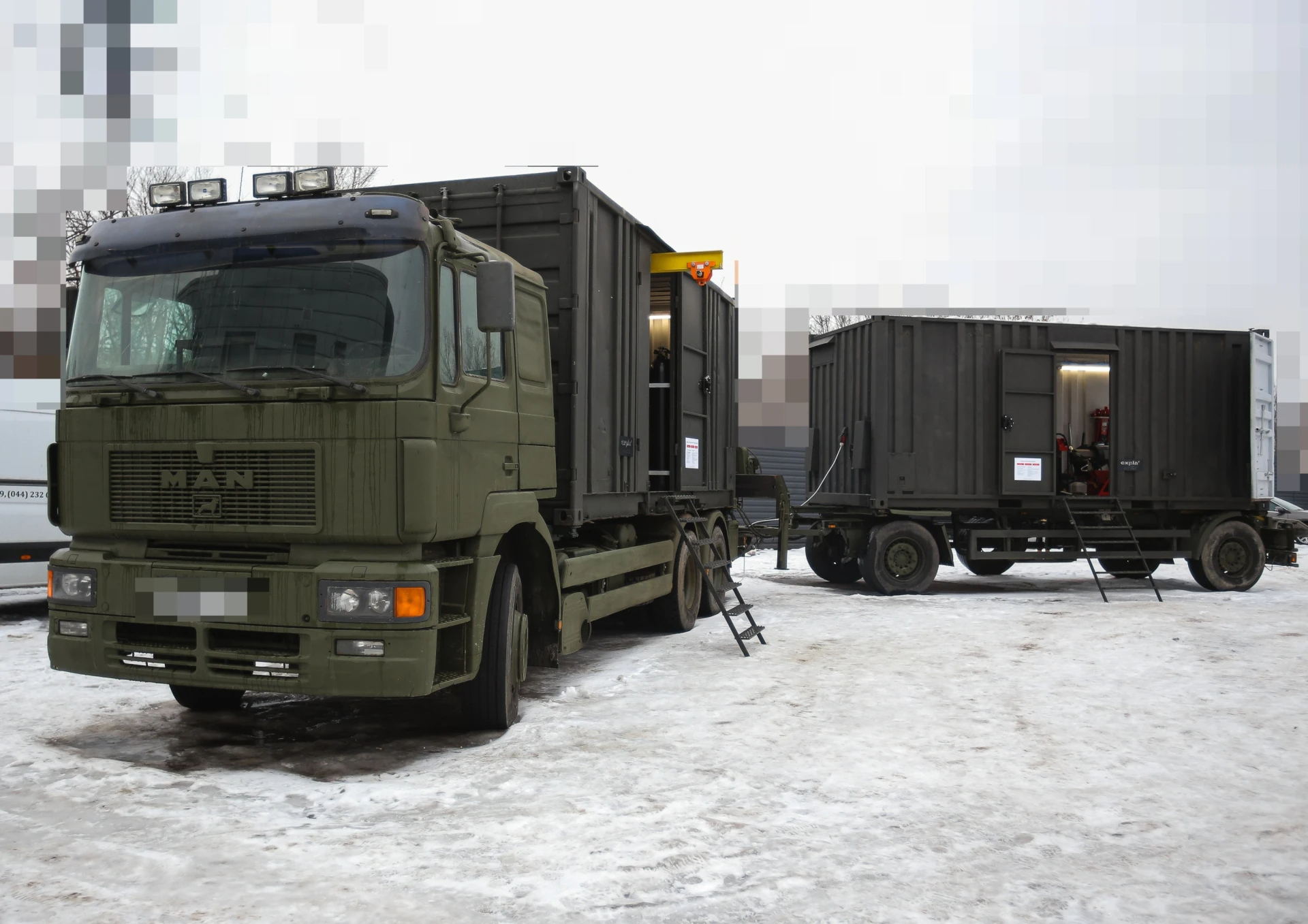
The workshop is equipped with a welding station for repairing artillery hulls, armour, subassemblies and modules. It also features a lathe and modular tooling stations for manufacturing or refurbishing components.
Now, a component for a self-propelled artillery system can be repaired in a matter of hours, rather than waiting days or even weeks.
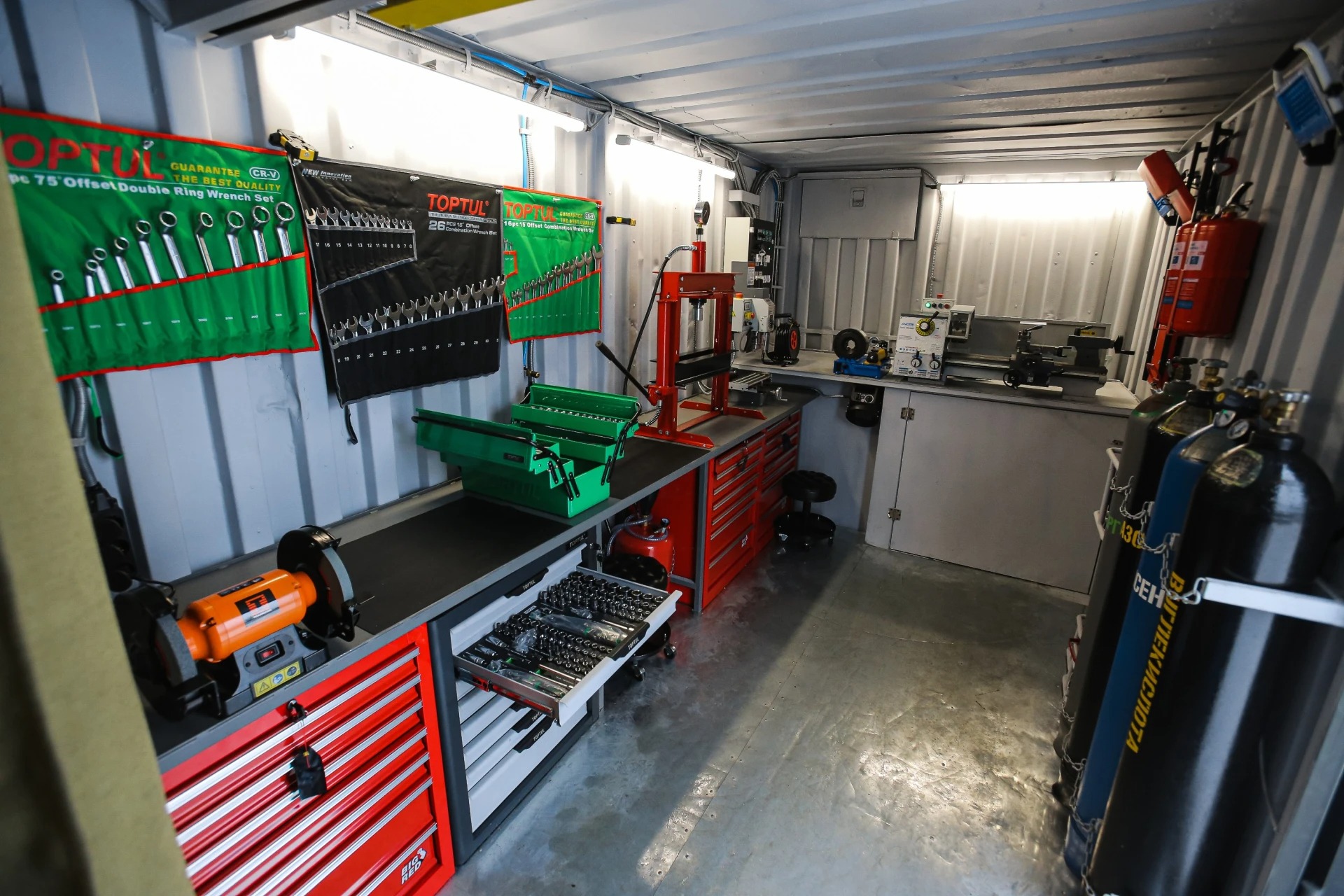
The workshop includes a sandblasting unit for preparing parts for repair. Separate tools are used for painting, applying camouflage and cleaning guns of mud and dust.
A beam-mounted hoist is installed inside to lift heavy items, a task that previously required several soldiers to perform manually. Additionally, a loader crane with a 9-tonne lifting capacity has been mounted on the platform.
This workshop enables the 43rd Artillery Brigade to perform around 90% of repairs independently. The only tasks it cannot handle are replacing barrels and overhauling engines and gearboxes on self-propelled artillery systems.

The tyre-fitting facility in the second container is equipped with two machines. The smaller one handles wheels for off-road vehicles and pickups, while the larger can change tyres on US-supplied Oshkosh trucks and Swedish-made Archer self-propelled guns. The unit is operated by two people.
Having such a system in the unit allows personnel to save a significant amount of money. Yaroslav Lysenko, Commander of the 43rd Separate Artillery Brigade, estimates that the military tyre repair facility has paid for itself five times over in just two years.
While the containers operate in the area of operations, a MAN truck equipped with a loader crane transports logs and concrete blocks and handles other logistical tasks for the brigade.
Pavlo Narozhnyi, founder of Reactive Post, told Ukrainska Pravda that the total cost of the project was €110,000, funded by the IT company Expla.

Reactive Post has delivered five container workshops in different configurations to military units. Grand Instrument has used the joint designs to begin mass-producing these systems for other customers.
New scale of production
The NGO Sprava Hromad and the Poroshenko Foundation went a step further, using the foundation's funds to produce their own repair workshops.
An Ukrainska Pravda journalist visited the volunteer team's site, where finished products are assembled before delivery.
The fund's team currently works with three production facilities located across the country.
Sprava Hromad has been supplying the Ukrainian military with bath and laundry units since the start of the full-scale war, leading to the standardisation of many production processes. Everything begins with 20-foot shipping containers, which are sourced from donors, provided by the military, or purchased independently.
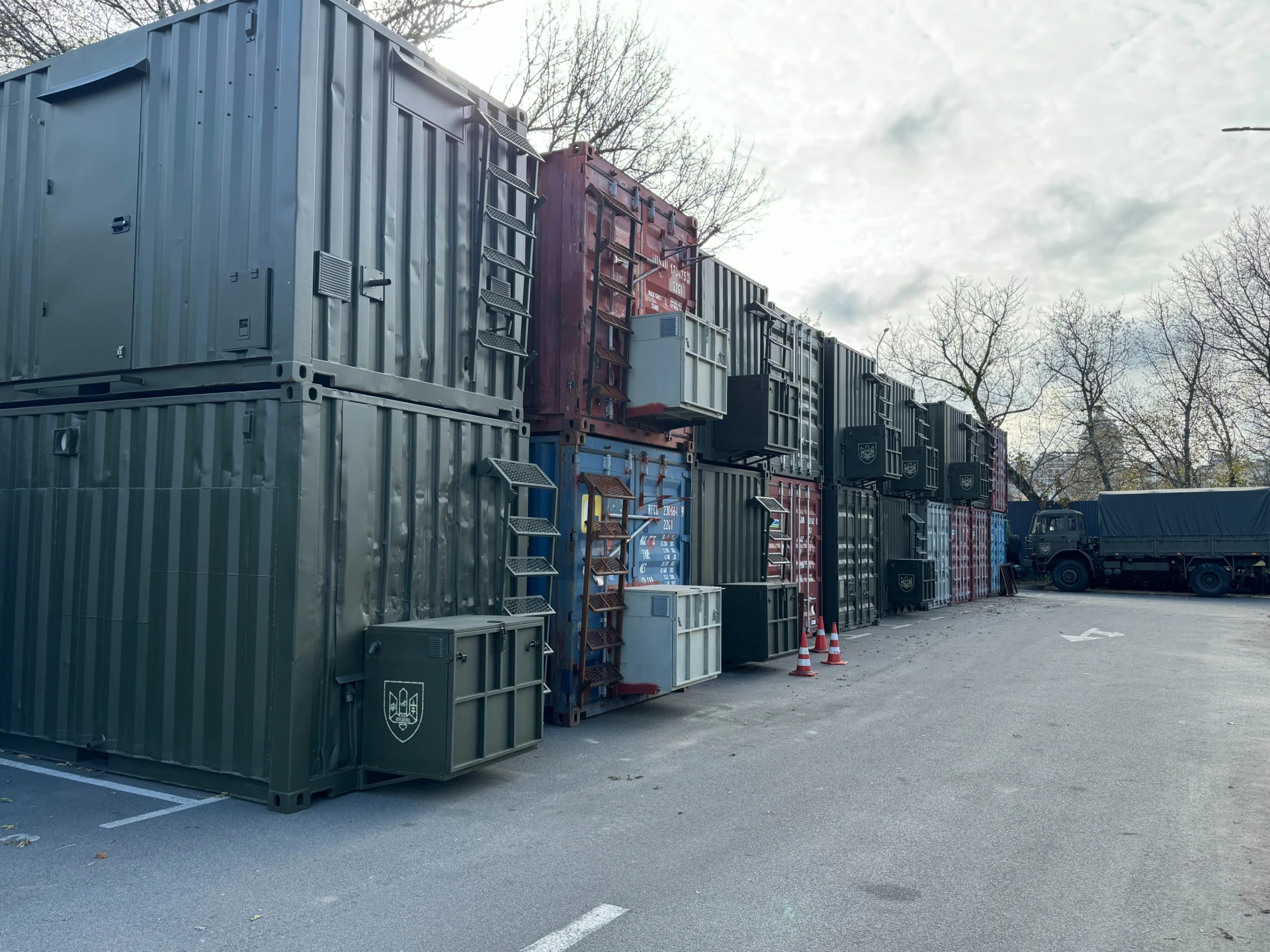
At the production site, workers weld the container bodies and cut openings for windows, doors and utility pipes. Next, they insulate the containers and install a wooden frame for the interior panelling. The container is then sent for equipment installation.

An awning is attached to the outside of the container – a retractable canopy that provides shelter under which military personnel can operate a welding machine.
The end wall of the container has openings for supplying argon to the welding machine and power from the generator. It also features a small window for loading components onto the lathe.
The 13-kW generator is mounted outside. A ladder provides access for servicing the workshop, and a beam is used to remove the generator.
Inside the workshop, there is a semi-automatic lathe, along with drilling and milling machines, a plasma cutter, a parts-washing unit, a hydraulic press, equipment for repairing hydraulic systems, as well as a full set of wrenches and electrical tools.
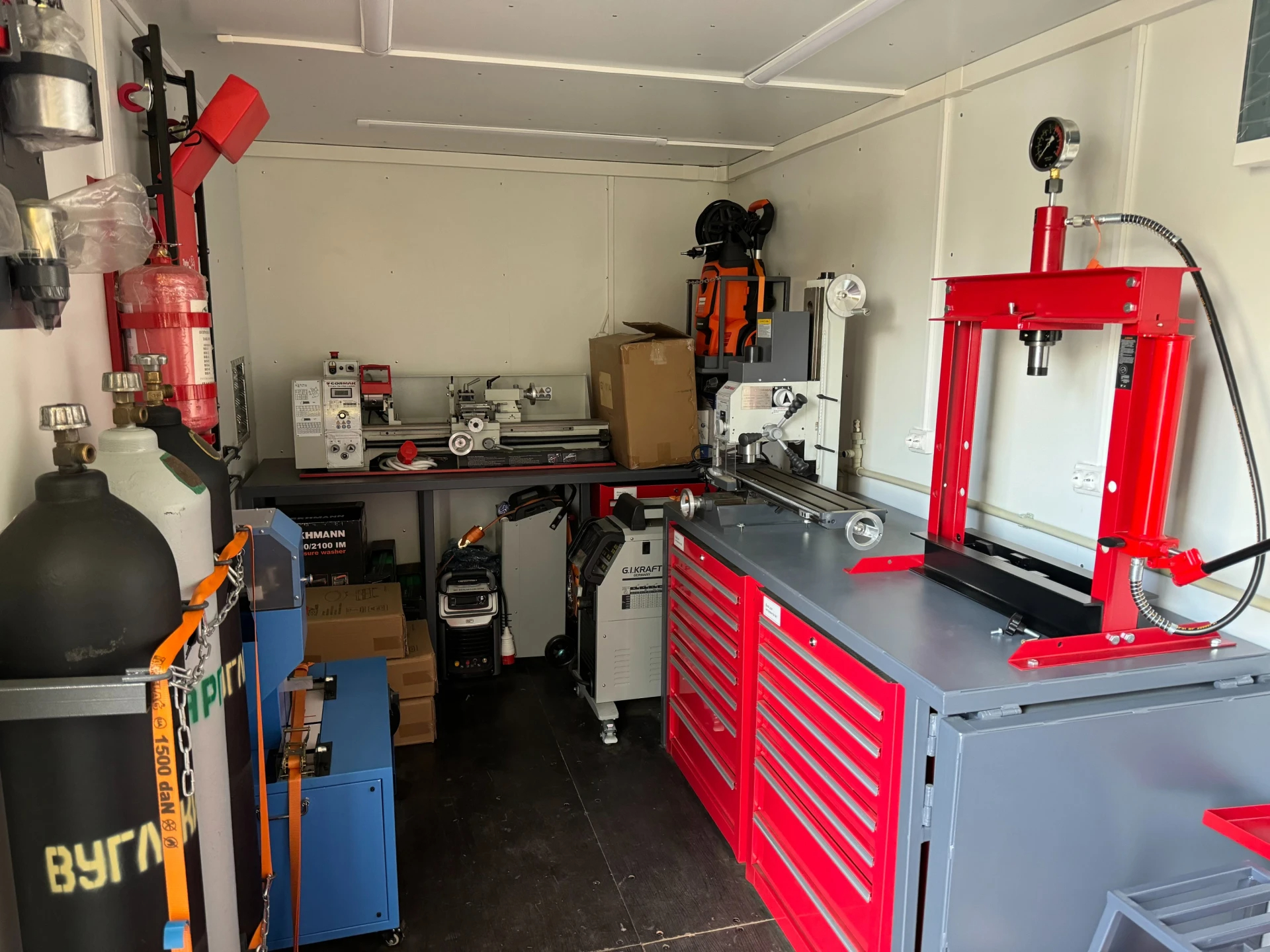
Loads of up to one tonne are moved using a beam-mounted hoist. Inside the container, a special stand allows lorry and pickup engines to be mounted for further repair and maintenance.
Once all the equipment has been installed and tested, the container is painted, mounted on a wheelbase and delivered to the military.

More than 20 of these repair systems have been manufactured. Each costs approximately UAH 1.8 million (around US$42,500).
The container-based workshop is the second project implemented by Sprava Hromad. Initially, the mobile car repair workshop was built on a Leyland DAF truck chassis, purchased in bulk in Europe by the Poroshenko Foundation.
This repair workshop is designed for battalion-level use and handles minor to medium repairs, so the equipment it contains is relatively modest.
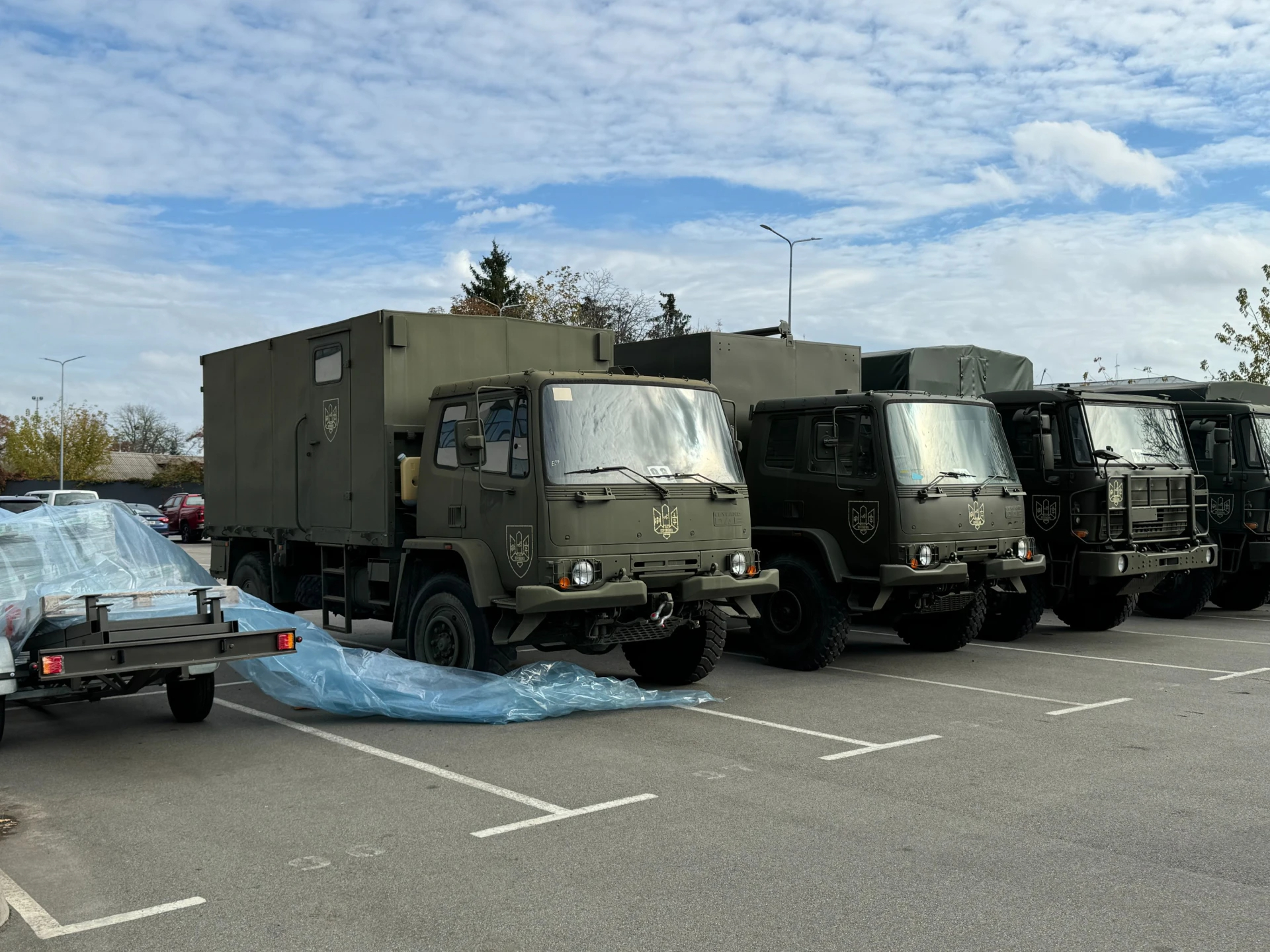
The machine is equipped with a welding unit, a drilling machine, a vice, a charger, an 8.5 kW generator and a set of wrenches and accessories for the equipment.
A lifting boom is mounted on the roof, allowing the dismantling of engines and other components weighing up to a tonne.
The military has received 103 vehicles of this type. Each workshop costs over UAH 1 million (around US$23,600), including the chassis.
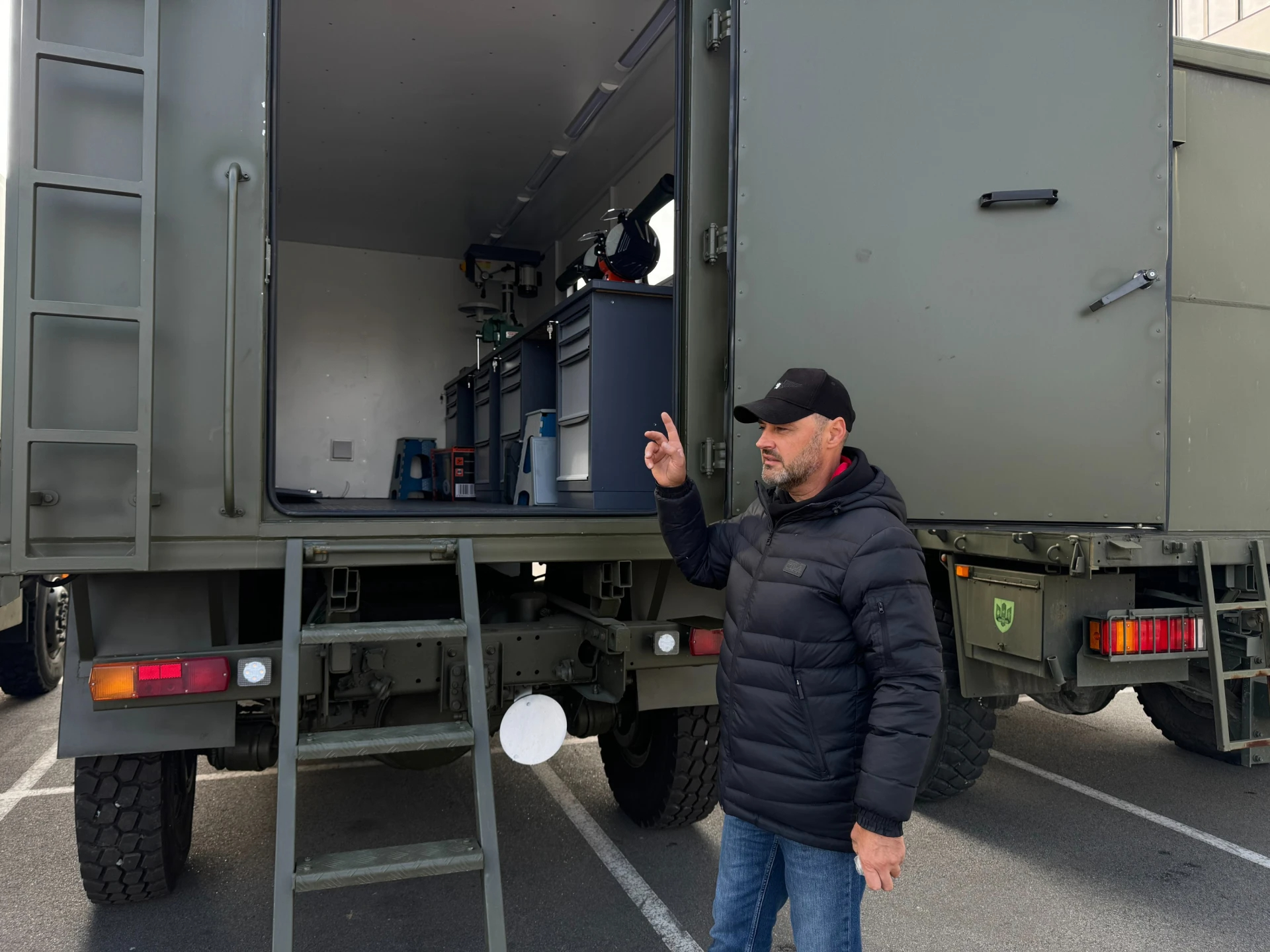
In addition, the foundation provides mobile tyre changers and workshops for servicing and repairing wheels with Run-Flat inserts, used on armoured vehicles and trucks.
Even greater mobility
Large workshops expanded the logistical capabilities of Ukraine's frontline brigades, but Russian drone and guided bomb strikes pushed them far to the rear. The military concluded that smaller vehicles would be enough, allowing repairs to be carried out directly on field roads while remaining less visible.
The idea of fitting a workshop into a pickup truck became very attractive. This is how the small mobile Locker workshop came into being. Reactive Post recently raised funds for one such vehicle for the 52nd Artillery Brigade of the 3rd Army Corps.

"In fact, it's a rapid-response vehicle," Locker representative Mykyta told Ukrainska Pravda. "Its mission is to deploy as quickly as possible, carry out repairs, and then pack up and move just as fast. We receive pickups in various conditions. We remove the body, reinforce and extend the frame, strengthen the springs, and install new shock absorbers.
Next, we fit a module and install the equipment inside. These are a small tyre-fitting stand, a generator, a compressor, a welding machine, a vice and dozens of compartments for tools and equipment."
The vehicle is equipped with a lifting boom capable of handling up to 500 kg, offering functionality comparable to light lorry-based vehicles. Each LOCKER costs 916,000 UAH (around US$21,700).
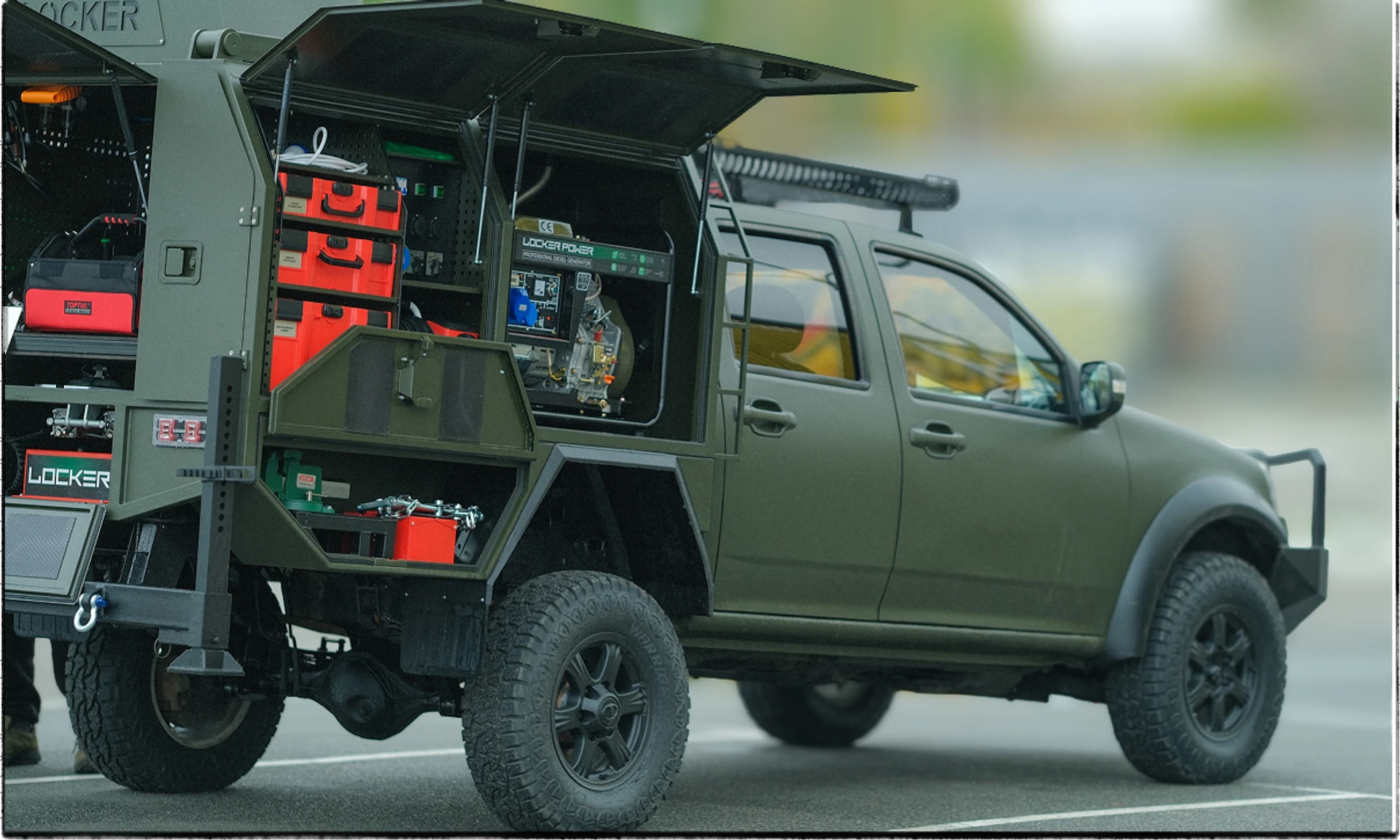
The Poroshenko Foundation is also beginning to raise funds for pickup-based workshops. These vehicles represent a modern trend in engineering support, capable of performing most repair work on frontline automotive equipment. This approach allows equipment to return to service much more quickly.
Container-based workshops will be used to handle major repairs and manufacture spare parts as far from the front line as possible.
After the Ukrainian Armed Forces transitioned to a corps system, each corps is deploying new brigades along with its own repair units. These units need to be equipped from scratch, meaning the state and volunteers will have even more work to do.
...
Anyone can help strengthen the Ukrainian military's repair capabilities. The charitable organisation Reactive Post has launched a fundraiser to raise 1 million UAH for a mobile technical workshop to service the artillery of the 26th Separate Artillery Brigade. You can support the Ukrainian military by following this link.
Author: Vladyslav Khrystoforov
Translation: Artem Yakymyshyn
Editing: Susan McDonald








